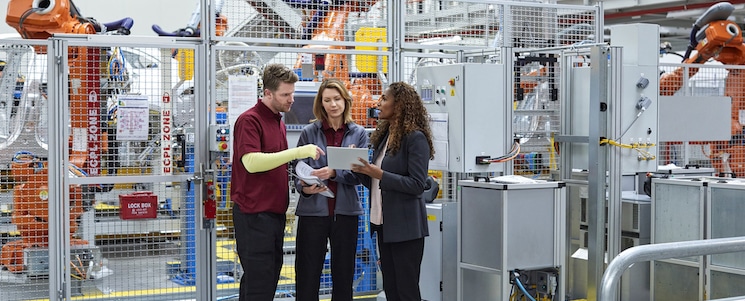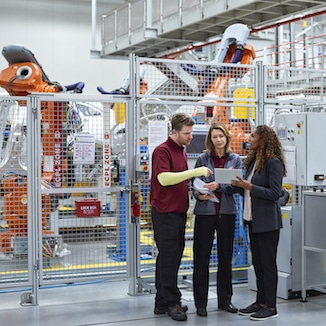
Dan Miklovic of LNS Research recently posted a blog post about the difference between business transformation and industrial transformation. Many businesses are implementing a digitalization strategy to transform their business processes. This is sharply different from the transformation of the industrial sector, which faces many more challenges than other companies that don’t operate in the industrial world.
One way to understand the difference is to consider how the consumer sector compares to the Manufacturing and the Maintenance, Repair, and Overhaul (MRO) space. Consumer products must undergo thorough quality and user experience testing in order to be well accepted in the marketplace. Airplanes, however, must be manufactured to comply with strict safety and compliance regulations and then be rugged enough to last an expected lifecycle of 30, 40 or even 50 years. As a result, LNS Research makes the point that industrial transformation is much harder than its business equivalent.
Industrial Transformation is Not New
Industrial transformation is nothing new. Innovation has always upset the status quo. When the steam engine burst onto the scene, it signaled the death knell of an agrarian society. Huge transformations followed courtesy of the locomotive, electricity, steel construction, the assembly line, automation, the transistor, the microchip, and more recently, the Internet. Today, we are in for a further period of turmoil as a digital transformation is now in process across industrial operations.
The promised benefits are slow in coming. Miklovic explained why – a transformation of industry is always hard. And in the case of digitalization, he believes it requires a completely different mindset than before.
In the past, individual companies and entrepreneurial titans grasped the importance of new technology and often went to ruthless ends to dominate their fields. Rockefeller, Vanderbilt, Edison and JP Morgan are notable examples. Following in their wake, entire industries would gradually transform. But that competitive dog-eat-dog approach may be getting in the way of digital transformation. LNS Research stated that cooperation between supply chain partners, customers, and even rivals is needed to make industrial transformation a success.
Historical Examples of Cooperation
Two decades ago, GE demanded its entire supply chain and its customers implement Six Sigma. The company trained and coached these partners and even seeded GE managers into their organizations to spread the message. Similarly, Toyota effectively drove lean practices across its value chain with Total Quality Management (TQM).
What may be curtailing the digital transformation, however, is a general reluctance to share engineering models. Companies feel they are giving away their secret sauce or downgrading their own intellectual property by sharing it with rivals. There certainly may be legal requirements and contractual hoops to go through to enable sharing. But in its absence, ongoing efforts such as establishing digital continuity, the digital thread or digital twins is being inhibited. As a result, performance approximations and a lack of comprehensive data inputs are insufficient to demonstrate the full value of this technology.
Overcoming Distrust
That is just one example of the challenges facing the digital transformation of the industry. Manufacturers and MRO service providers must overcome decades of distrust and take the necessary steps to share their systems. This is an essential step in successfully achieving an industrial transformation. Without this step, it becomes impossible to establish a digital thread that extends continuity throughout the value chain.
And in an era where traditional MRO and manufacturing players face competition from external tech-based companies, rivals must come together to build a digital ecosystem that benefits everyone. But breaking down those barriers may be a tough sell.
A good first step is to prioritize solution providers that have healthy relations with your other partners. Vendors focused on persuading you to buy all their offerings may not be doing you a favor. Manufacturers, after all, typically operate in heterogeneous environments.
Closed systems with limited integration options are a hindrance in an era of digital ecosystems and collaboration communities. Best to select a vendor willing and able to cooperate with others. This sets the stage for the establishment and management of end-to-end digital continuity. Further, it enables management to gradually phase in digital practices and gain confidence as they reap the benefits.

